First in Our “Behind the Scenes” Series
In winter, thoughts naturally turn to spring, which makes us think about pruning – and this is a very good time to pick up the pruners and look at the trees. We caught up with Duane Huss, Loma Vista Nursery’s operations manager, for quick tips on how to do the job properly.
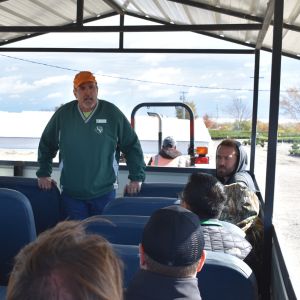
Duane Huss, Operations Manager, Loma Vista Nursery
Duane, what types of plants benefit from pruning?
Keeping plants of all types healthy, happy and looking good requires pruning of some sort. So, all of them will need pruning at one point or another to keep them rejuvenated.
What are common mistakes people make?
Typically, people do not trim their plants back hard enough. When they aren’t trimmed back properly, plants will become overgrown, leggy and won’t perform as well in the landscape.
When is the best time to prune trees and shrubs?
It’s still a tad early, but mainly because it’s so cold! Generally, a good – and more comfortable – time to prune in the Midwest is February through March.
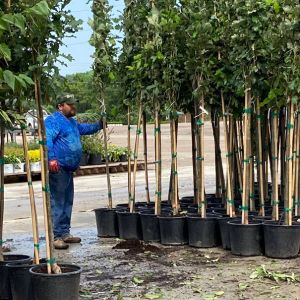
Inspecting a new load of trees.
What are the benefits of pruning?
There are a lot of them. First, by removing dead, diseased or injured branches, pruning helps maintain the plant’s health and keeps it looking good. Pruning also controls plant growth. It rejuvenates older plants and, when done at the right time, encourages flower and fruit production on specialized ornamentals.
That leads to our next question. If a plant is a rebloomer, does it even need to be pruned?
It’s a good idea to do so, yes. You’ll likely get a heavier rebloom, along with a longer bloom-time.
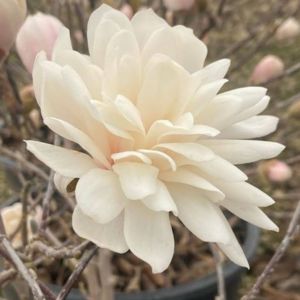
Royal Star Magnolia (Magnolia stellata ‘Royal Star’)
After a reblooming plant is pruned, will it bloom again in the same season?
It depends. If the plant is a reblooming variety – like, say, roses – then yes. They will rebloom in the same season. But if the plant is a tree or shrub like, for example, a magnolia or lilac, you do need to be careful. Spring-blooming trees and shrubs should be pruned only after they have finished blooming for the season, but before they set new buds in late summer to early fall.
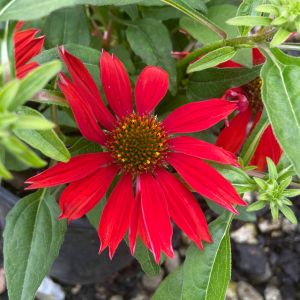
Sombrero® Salsa Red Coneflower (Echinacea x ‘Balsomsed’)
What should we do with the spent blooms after we’ve pruned them?
Birds and other wildlife like the seedheads of some perennials, like coneflowers, so it is a personal choice if you’d like to deadhead them or leave them up as a food source. Otherwise, toss them in the compost pile.
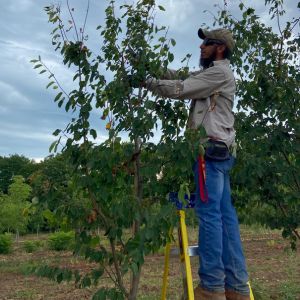
Pruning and shaping trees on the nursery helps create a strong leader.
How does Loma Vista Nursery prune its trees and shrubs?
As a production nursery, our methods are a bit different than what might be done by landscape maintenance crews or homeowners in their environments. We prune to keep the rest/bloom cycle moving and to get good branching on plants with a certain size in mind.
From there, and if it’s a reblooming plant, we stage-prune to make sure we always have plants blooming for our customers. We prune roses, hydrangea and weigela back in the fall so they’re ready for the upcoming spring. We do the same with perennials in the winter. Not only does Loma Vista Nursery stage-prune, we also do stage-planting, which stretches out the bloom times of our crops.
How do you track pruning needs within the crops?
Generally, we prune half the crop in one location and ship out the crop from the other half. Once the trimmed half has rejuvenated, we prune the other half in that location.
Loma Vista Nursery is taking professional trade orders for the spring 2024 growing season. Click here for our container order form. Click here for our in-ground tree order form. Visit our plant catalog for more information about Loma Vista Nursery grown perennial plants, trees and shrubs – all ideal for Midwest landscapes.
Learn More About the Loma Vista Nursery Family and Our Landscape Plants
Loma Vista Nursery grows fun and healthy plants for Midwest independent garden centers, landscape contractors and wholesale distributors. Review our website to learn about our values and best-practices as a Midwest plant grower.
Our staff members are experts in the field who love helping people learn and understand more about plants. To get help with your orders and answers to plant-related questions, send an email to sales@lomavistanursery.com or call (785) 229-7200.
Connect With Us
Stay current on our plant recommendations, growing tips and more by following us on social media.
